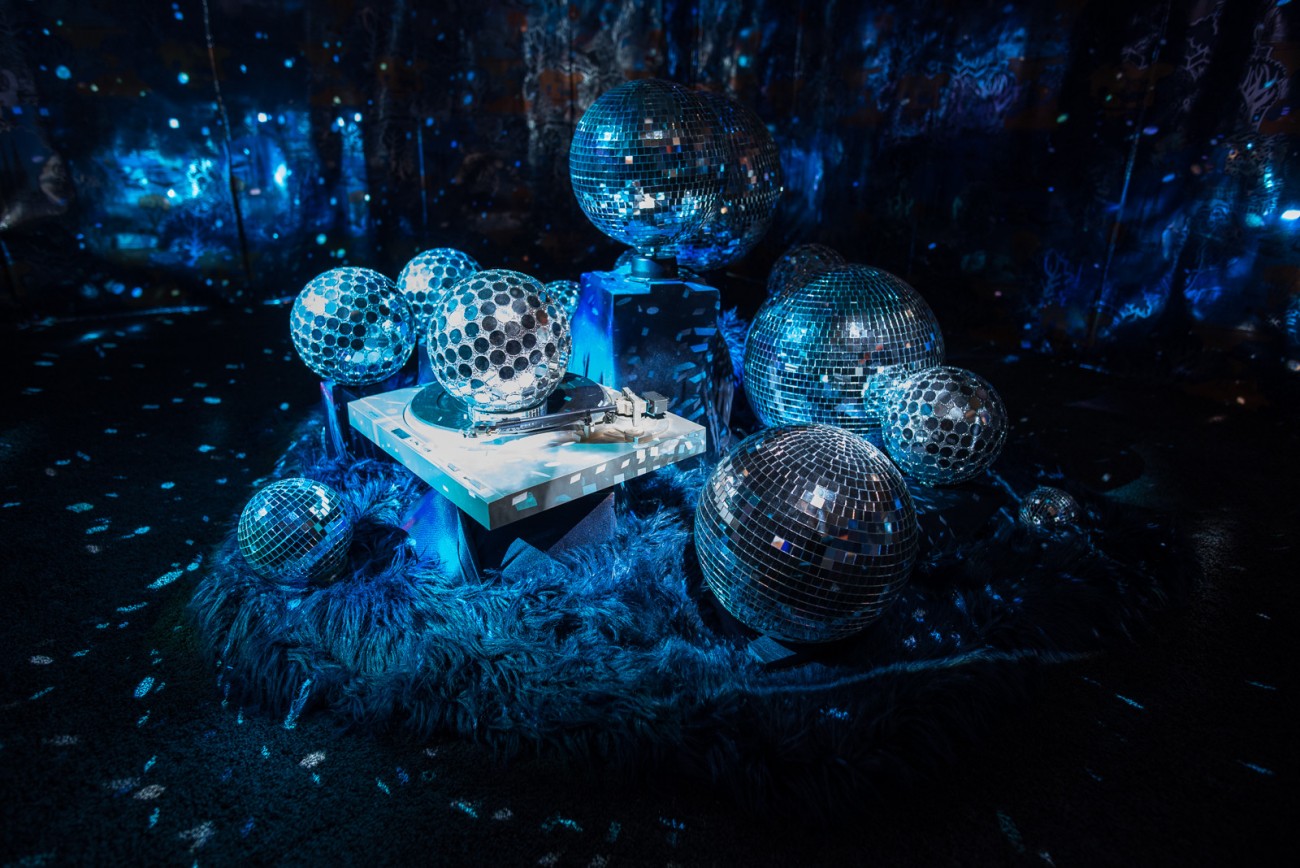
A version of this article also appeared in the It’s Not Just You newsletter. Sign up here to receive a new edition every Sunday. As always, you can send comments to me at: Susanna@Time.com.
My sister Ingalisa is a museum person. Travel with her means you’re in for some art. And while I knew I’d missed Ingalisa over this long year, I didn’t think I missed museums. There was just too much else to pine for.
But then we were standing in a darkened room within the newly-reopened Los Angeles County Museum of Art hypnotized by a dozen or so different-sized silver disco balls clustered near the floor like an Earth-bound galaxy. Two of the mirrored orbs spun wildly together like a dancing couple throwing shooting stars into the darkened room. And if you looked up, banners near the ceiling had messages in shiny script like: ‘Afflict the Comfortable / Comfort the Afflicted.’
Sure there’s probably a video of this work, Space Station: Two Rebeccas (2018) by filmmaker and artist Cauleen Smith, but the 2D screens we’ve been living in have nothing on finding yourself immersed in that glittering space.
There’s fascinating research on the unique physiological and psychological chain reaction we experience when we encounter art in person. Some researchers call this embodied cognition–our tendency, when we’re engaged with a piece of art or music or performance, to see ourselves in the work, or see ourselves creating the work, splattering the paint like Jackson Pollock. And when we see a piece of art that strikes us as beautiful, we’re likely to get a hit of dopamine, the pleasure hormone it feels a little like falling in love. And if we don’t understand what we’re seeing, or are challenged by a piece, our cognitive wheels start turning–what are these things, why are they arranged this way? And that binds us to the work in ways that are elevating and transportive.
Ingalisa and I pinballed around that museum like kids. Everything we saw set off cognitive fireworks. I didn’t realize until she brought me to LACMA that I missed art, and the privilege and challenge of seeing an utterly different perspective on the world, on myself, on what matters, and on our collective hurts and joys in the wake of viewing the world from my laptop.
We saw everything through our pandemic filter. Like, Do Ho Suh’s 348 West 22nd Street (2011–15) a life-size version of the artist’s New York City apartment created in vibrant, translucent polyester complete with building inspection plaques, radiators, and light switches sewn into the sheer walls. How wild to walk around outside this gauzy reconstruction of a small living space after pacing in our own few rooms for more than a year.
Subscribe here to get an essay from @SusannaSchrobs in your mailbox every Sunday.
And there’s no way to feel the intense vibration and noise of a kinetic sculpture like Metropolis II by Chris Burden from your laptop. It’s a huge whirring, buzzing model of a city with hundreds of little metal cars going around and through a web of highways and train tracks and buildings. The intensity of that man-made hive was like a flashback to the stress of packed subways, highways, and calendars. Our frenetic pre-COVID world looked like a museum piece, literally.
And then there was a stunning exhibition by German artist Vera Lutter called Museum in the Camera. She photographed parts of the LACMA campus and select sculptures and paintings using a camera obscura technique that creates ethereal black and white ghost impressions of classic works like Ludovico Mazzanti’s The Death of Lucretia, c.1730.

In this video, Lutter describes being inside what is effectively a room-size pinhole camera and seeing an upside-down reverse reflected version of what she’s photographing. And as Lutter explains it, because of the long exposure, “anything that moves quickly will become invisible.” So people walking into her frame or birds flying by don’t register. Only the art remains, not our fleeting corporeal selves.
The other thing about museums or any of the in-person culture we’ve been missing is that the more we learn, the deeper the mind-body connection to the work. That’s why it was a beautiful thing to think about the fact that the name of Cauleen Smith’s solo exhibition is Give It or Leave It. It’s an interdisciplinary exploration of creativity, radical generosity, and a utopian future that spans several different works that weave film and installation together to tell a story of both hope and protest.
To create Space Station: Two Rebeccas, the work that drew me in, Smith projected a video about two visionary 19-century Black Shakers onto those mirrored balls, so the shooting stars effect that so entranced us was refracted light from their story. Seeing it was an electric welcome to what can be.
p.s. Lots of museums are opening or increasing their capacity, including the Smithsonian museums and the National Zoo, which will open this month. So check their websites for safety protocols and visit info.
If you enjoyed this piece, sign up here for the weekly newsletter It’s Not Just You to get an essay from Susanna every Sunday for free.

And! Check out Susanna Schrobsdorff’s conversation with TIME’s Belinda Luscombe, author of Marriageology: The Art and Science of Staying Together on Remote Daily. how this long work-from-home year has affected couples and how to reset. A snippet below, and you can see the full interview here.
More Must-Reads from TIME
- Donald Trump Is TIME's 2024 Person of the Year
- Why We Chose Trump as Person of the Year
- Is Intermittent Fasting Good or Bad for You?
- The 100 Must-Read Books of 2024
- The 20 Best Christmas TV Episodes
- Column: If Optimism Feels Ridiculous Now, Try Hope
- The Future of Climate Action Is Trade Policy
- Merle Bombardieri Is Helping People Make the Baby Decision
Contact us at letters@time.com